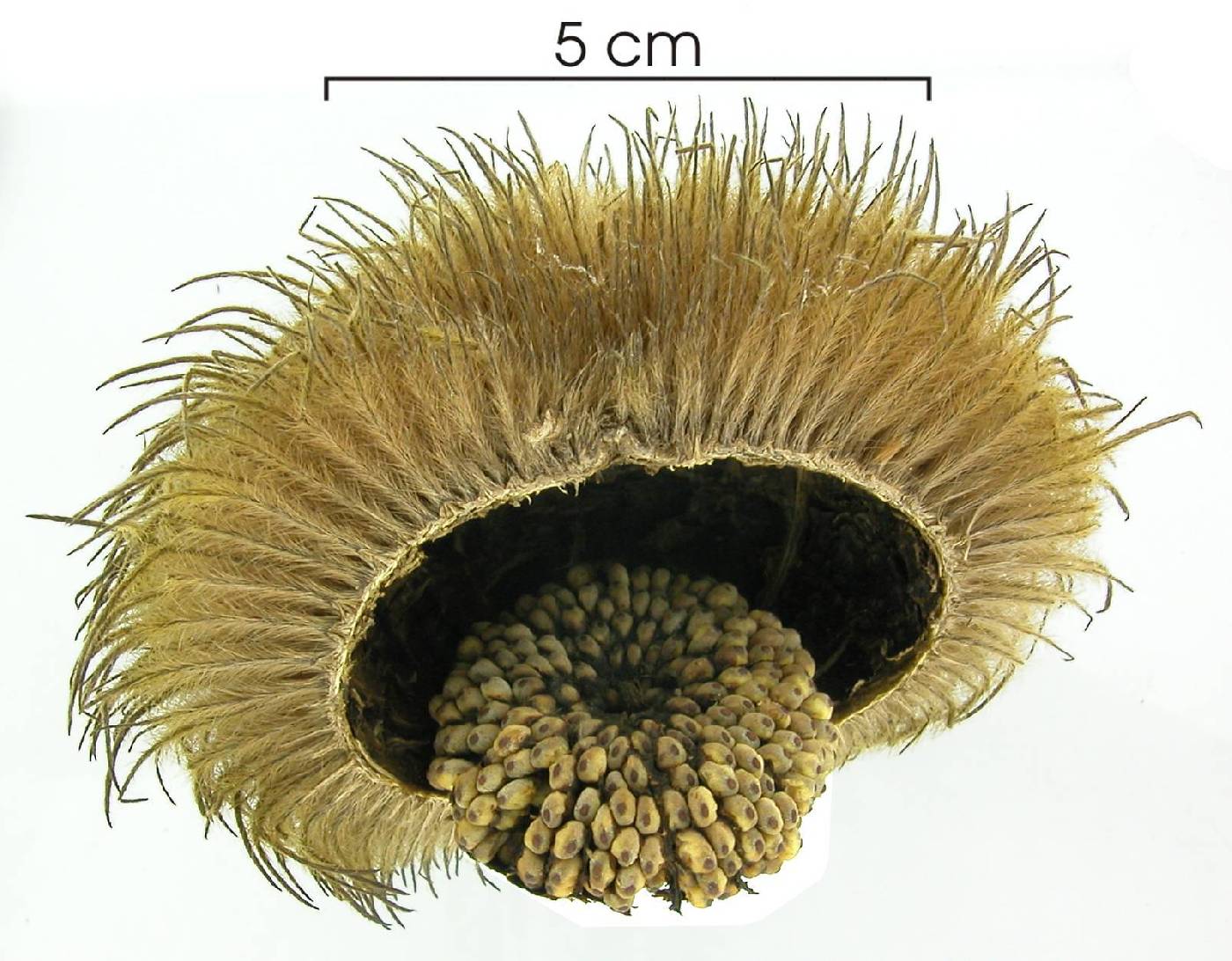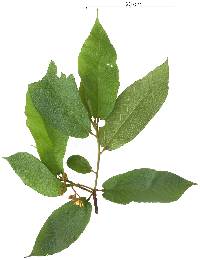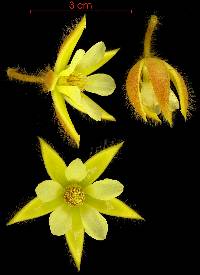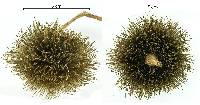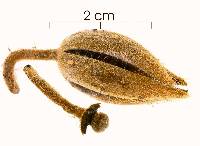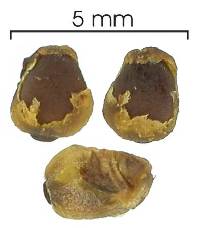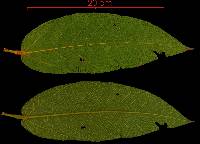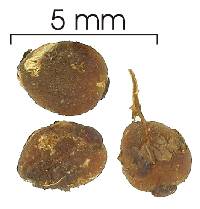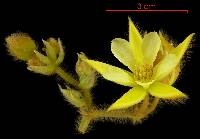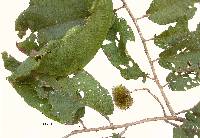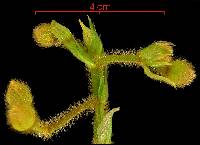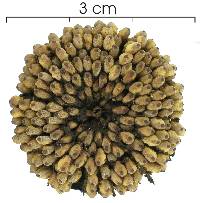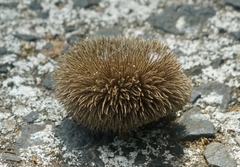

|
|
|
|
Family: Tiliaceae
peine de mono, more...peinecillo
|
Description: Small tree, often branched near ground, with broad crown just above ground and long, hanging branches. Occasionally in the forest, it grows straight, to 10-15 m tall. Leaves are large, alternate, finely toothed, arranged in a flat plane and spaced regularly along the branches. There are three main veins arising together from the leaf base. The veins are raised and very conspicuous on the underside of the leaf. Reproduction: Flowers are yellow, flat, star-shaped, with pointed petals, 3-4 cm across, produced throughout the wet season. Fruits are dry capsules densely covered with soft green spines. Distribution: Abundant tree of abandoned farms and grasslands, for instance, along the Summit Golf Course, where it forms dense stands 3-5 m tall. Very common along the road from Panama City to Gamboa Rd and in Gamboa, and there are quite a few along Pipeline Rd. Scarce in mature forest, only in natural clearings, but widespread, occurring from Panama City to the wetter montane ridges of the Caribbean coast. Similar Species: Leaves in a flat plane, with 3 prominent palmate veins, are good characters. LK castel Castilla elastica LK2 has very similar leaves, in a similar arrangement, and also occurs along roads from Panama City to Gamboa, but does not have 3 prominent veins. In the forest, leaves of LK quaras Quararibea asterolepis LK2 are also similar but not toothed. Look for the dense, red hairs on twigs of Apeiba. The congener, LK apeime Apeiba aspera, LK2 has quite different leaves and is not confused with A. tibourbou. Uses: The light wood is used locally for making rafts, posts, boxes, or as paper pulp, but not sold commercially. The bark is used locally for making cord, and oil is rendered from the small seeds. Descripción: Árbol de 5 a 25 m de alto. Tronco con la corteza exterior gris y con lenticelas negras. Ramas largas y colgantes. Ramitas terminales cilíndricas y con pelos amarillos y ferruginosos. Hojas simples y alternas, de 10-30 x 5-12 cm, oblongas o elípticas, con ápice acuminado, bordes aserrados y base cordada. Las hojas son de consistencia aterciopelada al tacto, y presentan tres nervaduras principales saliendo a partir de la base y numerosas nervaduras secundarias saliendo perpendiculares a estas, formando un patrón tipo escalera. Estípulas triangulares y persistentes en los extremos apicales de las ramitas. Pecíolo de 2-3 cm de largo y pulvinado en ambos extremos. Flores amarillas. Frutos en cápsulas globosas, de 4-8 cm de diámetro, cubiertos de pelos espinosos en el exterior, similares en forma a un ‘erizo de mar’. Datos Ecológicos: La especie crece a bajas y medianas elevaciones, en bosques secos o húmedos de todo el país. Deja caer parcialmente sus hojas durante la estación seca, pero las repone a inicios de la estación lluviosa. Florece y fructifica de mayo a enero. Especies Parecidas: A menudo se confunde con LK apeime Apeiba membranacea LK2 , pero en A. membranacea las hojas usualmente tienen los bordes enteros y los frutos son cápsulas achatadas y cubiertos en la superficie exterior de espinas cónicas pequeñas, ligeramente diferentes a los de A. tibourbou. También se puede confundir con LK annosp Annona spraguei LK2 , pero en A. spraguei las hojas tienen los bordes enteros y el envés es blanco o gris. Usos: La madera es empleada en la fabricación de cajas, formaletas, postes de cercas, pulpa de papel y en la construcción de balsas por su cualidad de flotador. De la corteza se extraen fibras utilizadas como cuerdas para amarrar, también para fabricar chácaras. Las semillas contienen aceite empleado como brillantina para el cabello. Tree, 6-20 (30) m tall, ca 25 cm dbh; outer bark thin, weakly fissured; inner bark white to tan with granular areas interspersed with round pockets containing thick sap; pubescence ferruginous, both long simple trichomes and shorter stellate trichomes on stems, petioles, lower midribs, axes of inflorescences, and calyces. Stipules triangular, to 2 cm long, subpersistent; petioles 1-3 cm long, long-hispid; blades +/- oblong-elliptic, acuminate, subcordate at base, 10-30 (33) cm long, 6-12 (15) cm wide, sparsely stellate-puberulent above with long simple trichomes on midrib, densely stellate-arachnoid below, serrate; palmate veins at base 3-7. Panicles to 11 cm long, opposite leaves; pedicels to 1.8 cm long; flowers few, 4 or 5-parted; sepals +/- lanceolate, 1.5-2.2 cm long, spreading at anthesis, thick, densely long-pubescent outside, glabrous inside; petals glabrous, spatulate to narrowly obovate, to 1.6 cm long, yellow or less commonly white, spreading at anthesis; stamens numerous, yellow, ca 7 mm long, the outermost irregularly united into a tube, sometimes sterile; anthers to ca 4 mm long, usually sparsely pilose; ovary globose, densely pubescent; style 8-12 mm long, +/- equaling petals; stigma shortly denticulate. Capsules depressed-globose to globose, to 8 cm diam (including bristles), densely covered with bristles, the bristles long, flexible, stout, to 1.5 cm long; seeds numerous, depressed-globose, ca 2.5 mm diam. Croat 4003a, 8170. Frequent in the forest. Flowers mainly in the rainy season (May to December), although a few flowers are seen all year. The fruits probably develop in 6-9 months and are most abundant in the dry season. Leaves fall in the dry season and new leaves are seen in the early rainy season. |
|
|
|

